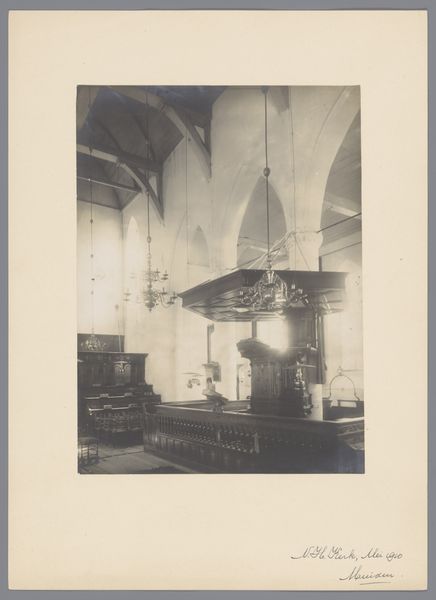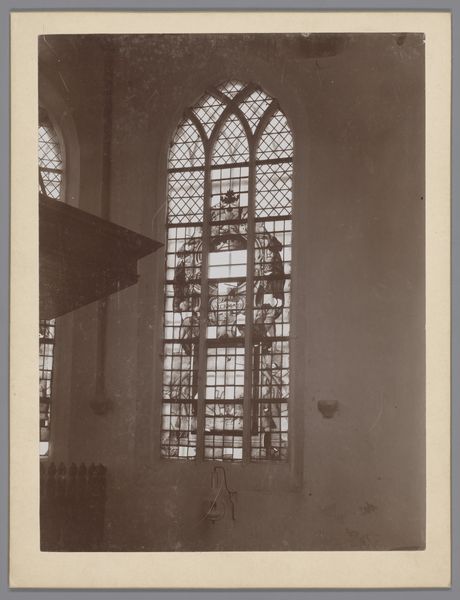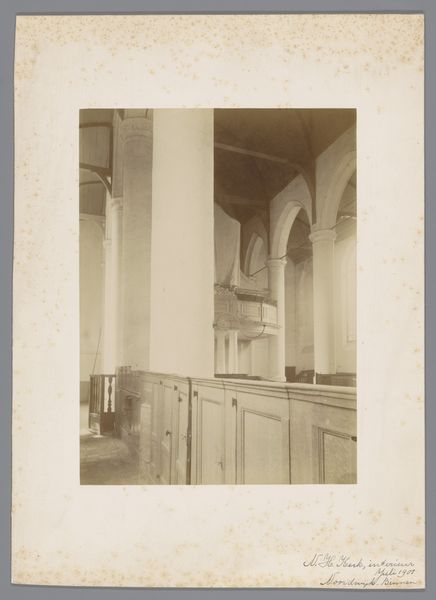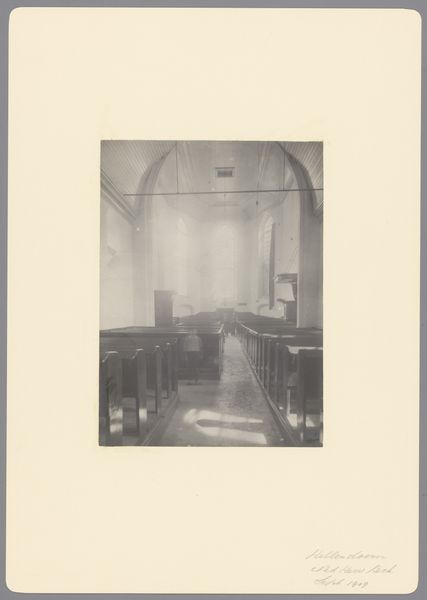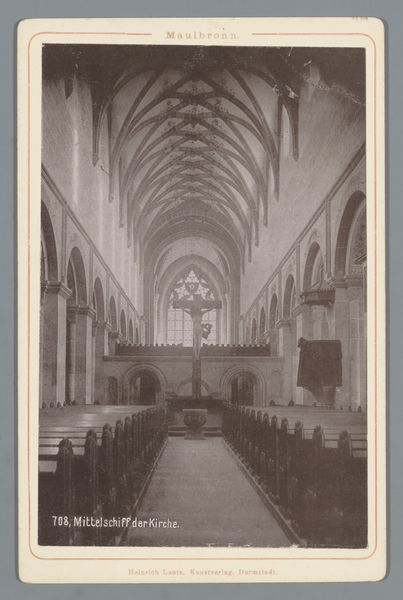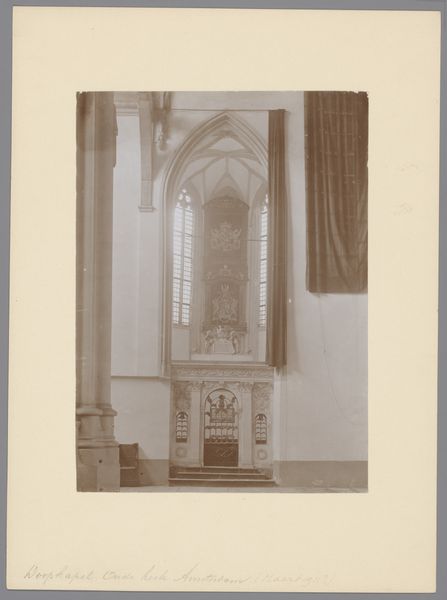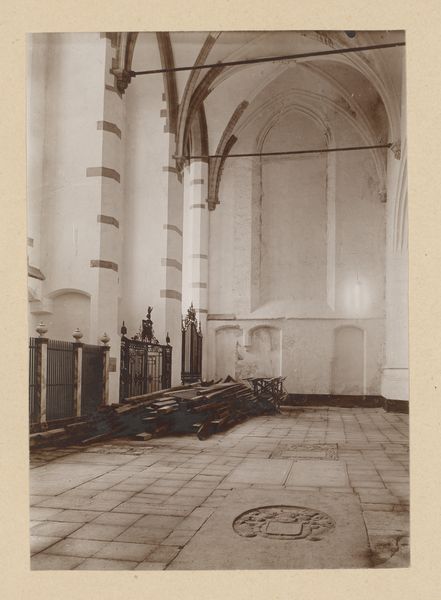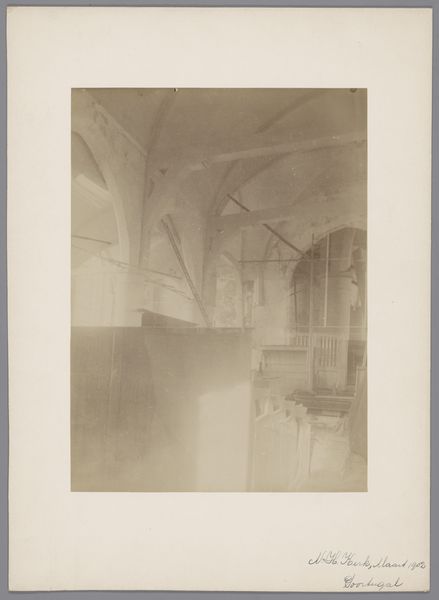
Dimensions: height 233 mm, width 175 mm
Copyright: Rijks Museum: Open Domain
Editor: Here we have a photo from 1901, "Interior of the Reformed Church at Nisse." The artist is listed as anonymous. I’m struck by the stillness in this image. The pews are empty, but the light suggests a sense of presence. What do you see in this piece? Curator: It’s a beautiful depiction of sacred space. Think about what a "reformed" church implies, and its relationship to the society it served in 1901. Do you notice the relative simplicity of the interior compared to, say, a Catholic cathedral? That visual simplicity mirrors the theological emphasis on direct relationship with the divine, which is crucial to the cultural context. Consider how power is manifested, or *not* manifested, through the architecture. Editor: I see that, definitely. The light isn't focused on anything ornate, it sort of falls equally across the space. Does that visual equality have something to say about social hierarchies at that time? Curator: Precisely. Churches of this era, and this design, often presented themselves as egalitarian spaces, but that often masked underlying social inequalities related to class and gender within the community. Whose voices *aren’t* heard within those simplified architectural structures, and in the broader society? Considering these power dynamics allows us to read this interior not just as a tranquil scene, but as a space of both spiritual solace and potential social constraint. Editor: That’s a really insightful reading. I wouldn't have considered that without thinking about those historical implications. Curator: These buildings reflect power, faith, and often hidden biases. Art like this compels us to ask better questions. Editor: It definitely does. I appreciate seeing the picture through that lens; it adds a lot of depth.
Comments
No comments
Be the first to comment and join the conversation on the ultimate creative platform.
